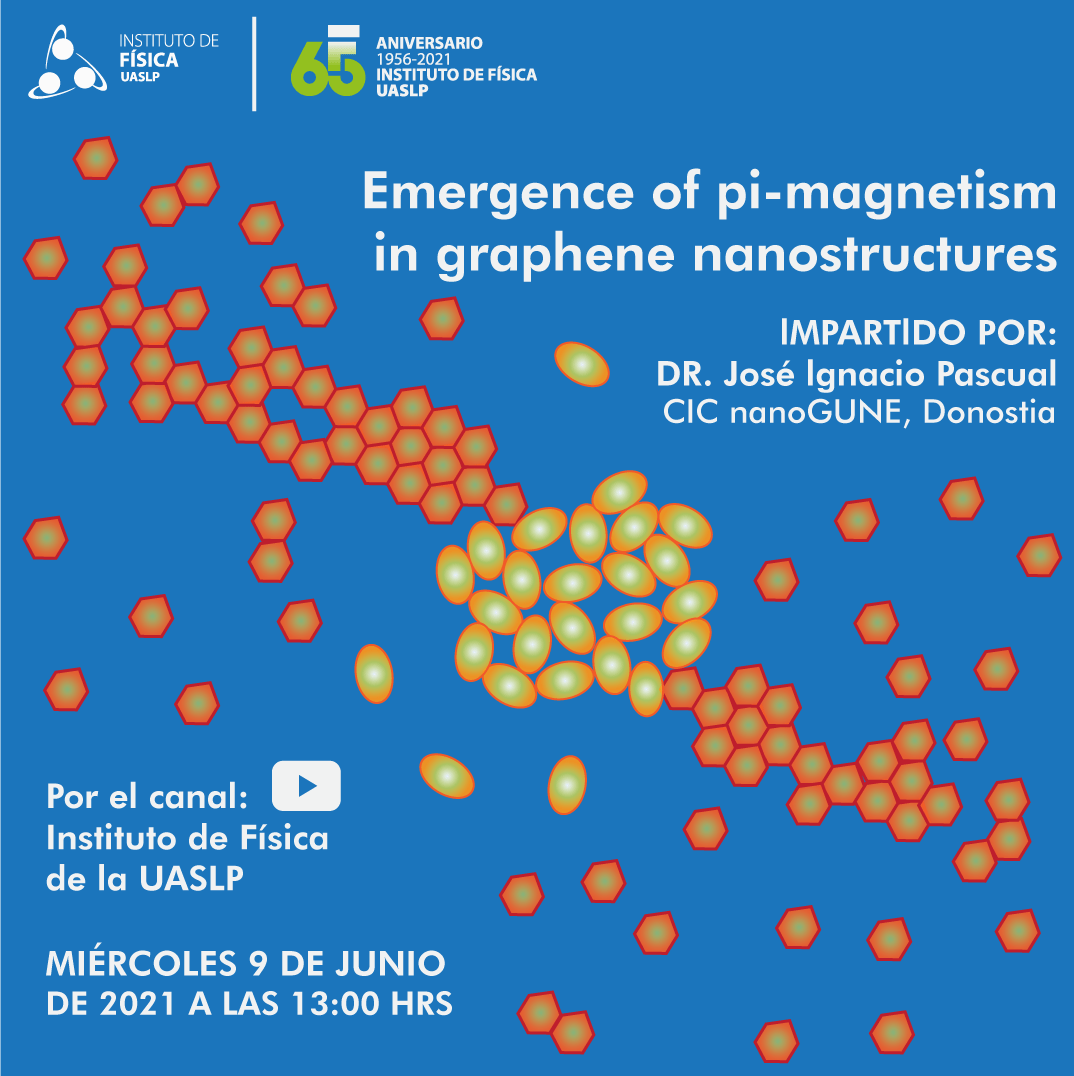
Liga de YouTube
Graphene can spontaneously develop intrinsic paramagnetism. Crucial examples are the magnetization of zig-zag edges in graphene, or the emergence of paramagnetism in open shell graphene nanostructures. I will show that graphene nanoribbons (GNR), fabricated with atomic precision on a metal surface exhibit fingerprints of π-paramagnetism on a metal surface, which can be detected and spatially localized with atomic resolution using low temperature scanning tunneling microscopy and spectroscopy [1].
Single electron spins emerge localized at certain zigzag sites of the carbon backbone. Their presence could be detected and mapped by spatially resolving the zero-energy resonance due to the Kondo effect. We found that near-by spins are coupled into a singlet ground state and quantify their exchange interaction via singlet-triplet inelastic electron excitations. Theoretical simulations picture how electron correlations result in spin-polarized radical states with the experimentally observed spatial distributions. Extra hydrogen atoms bound to radical sites quench their magnetic moment and switch the spin of the nanostructure in half-integer amounts.
I will also review other methods for activating magnetic ground states in graphene. For example, spin states can be created on a ribbon simply by substitutional doping or by incorporating magnetic species into a ribbon using on-surface synthesis routes (see included image of a Fe porphyrin contacted to chiral nanoribbons). In this last case, we proved that the molecular spin survives in the ribbon by using spin-excitation inelastic spectroscopy [2]. By proper selecting the position of the halogen functionalization, we fabricated linear GNR-FeTPP-GNR structures and performed electronic transport measurements [3], detecting spin-excitation fingerprints in transport mode.
References
- J. Li, S. Sanz, M. Corso, D.J. Choi, D. Peña, T. Frederiksen, J.I. Pascual, “Single Spin Localization and Manipulation in Graphene Open-Shell Nanostructures”, Nature Communications 10, 200 (2019).
- J. Li, N. Merino-Díez, E. Carbonell-Sanromà, M. Vilas-Varela, D. G. de Oteyza, D. Peña, M. Corso, and J.I. Pascual, “Survival of spin state in magnetic porphyrins contacted by graphene nanoribbons”, Science Advances 4, eaaq0582 (2018)
- J. Li, N. Friedrich, N. Merino-Díez, D. G. de Oteyza, D. Peña, D. Jacob, and J.I. Pascual, “Electrically Addressing the Spin of a Magnetic Porphyrin through Covalently Connected Graphene Electrodes”, Nano Letters 19, 3288 (2019).
- N. Friedrich, P. Brandimarte, J. Li, S. Saito, S. Yamaguchi, I. Pozo, D. Pena, T. Frederiksen, A. Garcia-Lekue, D. Sanchez-Portal and J.I. Pascual, “Magnetism of Topological Boundary States Induced by Boron Substitution in Graphene Nanoribbons“, Physical Review Letters 125, 146801 (2020)
- J. Li, S. Sanz, J. Castro-Esteban, M. Vilas-Varela, N. Friedrich, T. Frederiksen, D. Peña and J.I. Pascual „Uncovering the Triplet Ground State of Triangular Graphene Nanoflakes Engineered with Atomic Precision on a Metal Surface“, Physical Review Letters 124, 177201 (2020)










